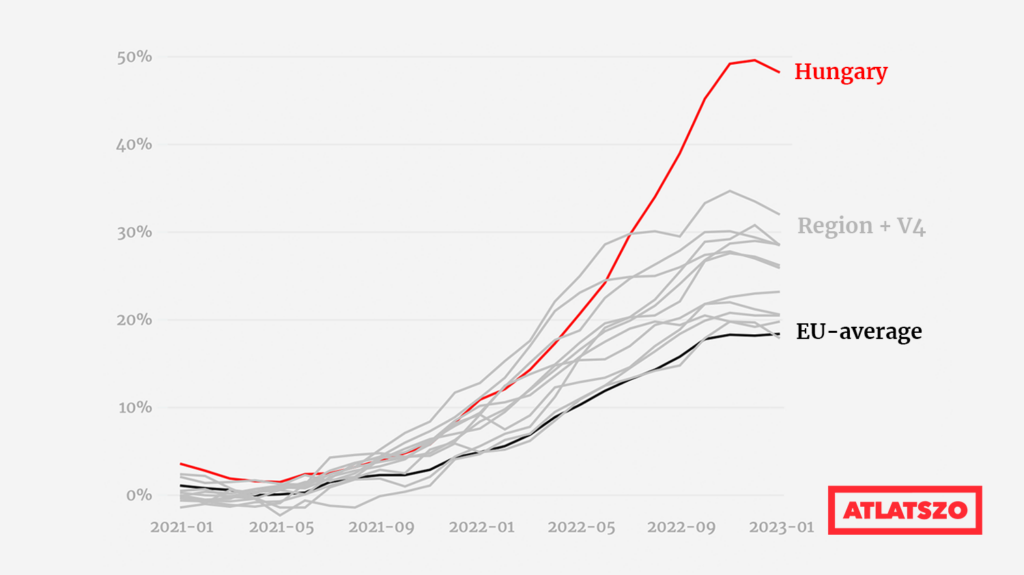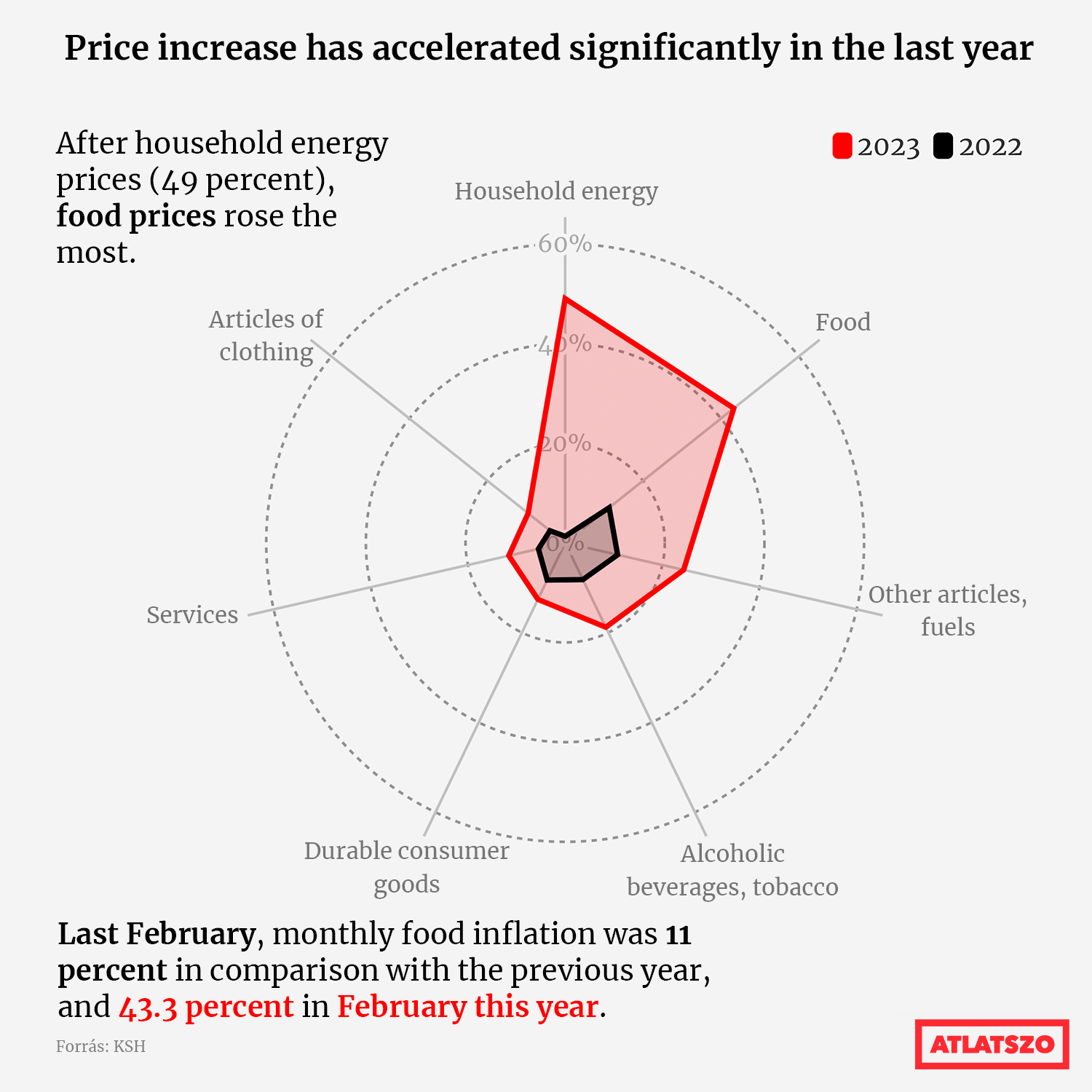The https://english.atlatszo.hu use cookies to track and profile customers such as action tags and pixel tracking on our website to assist our marketing. On our website we use technical, analytical, marketing and preference cookies. These are necessary for our site to work properly and to give us inforamation about how our site is used. See Cookies Policy
Shocking infographics about the astronomical Hungarian food price inflation
Food inflation in Hungary fell for the first time in twenty months in January this year, Eurostat data shows. However, food price increases in EU countries were much more moderate than in Hungary and the region. The rise in Hungarian food prices in recent months has been exceptional, not only in the EU but also worldwide. We have looked at inflation data for six essential food items without price caps and compared it with countries in the region and the EU average.
According to the European Union’s statistical office, food inflation in Hungary seems to have fallen from December to January after almost two years: after 49.6% in December, the annual price increase was 48.2% at the beginning of this year. Hungarian data shows that the trend continued in February, with a smaller increase of 43.3%. Still, the rate of price increases in Hungary is considered outstanding in the region and in the European Union.

According to data by the Hungarian Central Statistical Office (KSH), food price inflation was the second highest after household energy among consumption groups. While in February 2022, food inflation was 11% compared to the corresponding period of the previous year, it was 43.3% in February 2023.
KSH already published the inflation data for February 2023 for Hungary, while other sources such as Eurostat have only published data for January 2023 in the beginning of March. At the end of 2022, Hungarian food price inflation have reached its peak with 49.6%. January showed a slight decrease with 48.2%. And as shown in the above chart, the rate of inflation decreased even further in February, to 43.3%. Hungarian food inflation is nonetheless the highest among EU countries and compared to the EU average. Hungary is followed by Lithuania with a difference of 16%.
Among basic food items, bread prices have risen the most, but cheese and butter have also increased significantly.
This January, the price of bread in Hungary was 81.7% higher than at the same time last year, a minimal decrease compared to inflation in December 2022. The dramatic increase since last summer was unique in the region. The second-highest bread inflation was recorded in Estonia, where it was much lower at 46.5%. The EU average inflation rate in January is only a quarter of ours.
Also significant is the rise in the price of cheese, which is 79.2% in Hungary, according to the latest figures. This is an improvement compared to the previous month, but still far behind Lithuania (44.2%), which is in second place. The EU price increase in January was only about a third of that in Hungary.
Butter prices rose sharply compared to January last year, with Eurostat reporting an annual increase of 76.5%. Romania is second with 47%, and the EU average is about a third of the Hungarian average.
Annual meat inflation in Hungary increased slightly in January, to 40.7% from 40.3% in December. This is about 10% higher than the second-placed Estonia, but twice the EU average.
The price of vegetables has been quite fluctuating over the past two years in most of the countries in the region, but autumn 2022 was the point at which Hungary took over first place. Thus, in January, Hungary had the highest inflation rate for vegetables in the region, at 36.3%, and more than double the EU average.
Of the basic products surveyed, fruit is the one with a slightly lower increase – 30.3%. Like vegetables, fruit prices also varied, with Hungary taking the lead in August. Since then, we have remained in first place with 30.3%, ahead of all the countries in the region and almost four times the EU average.
Food price increases in Hungary are not only high compared to the region and the European Union. At the end of last year, several international rankings found that Hungarian food prices were among the highest in the world. According to World Bank statistics last year, Hungary had the 10th highest food price increase worldwide.
Written by Luca Pete and Krisztián Szabó. Translated by Luca Pete and Krisztián Szabó. The original, Hungarian version of this story can be found here.



